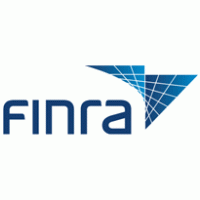FINRA pronounces on retail communications about private placement offerings
Chris Hamblin, Editor, London, 15 July 2020

The US Financial Regulatory Authority has published a note to advise firms about how to comply with its rule 2210, on communications with the public, to be used when a firm is creating, reviewing, approving, distributing, or using retail communications concerning private placement offerings.
Private placements are unregistered, non-public offerings of securities that rely on available exemptions from registration with the Securities and Exchange Commission (SEC) under either sections 3 or 4 Securities Act 1933. Most private offerings are sold pursuant to one of three “safe harbors” under Rules 504, 506(b), and 506(c) of Securities Act Regulation D, which requires a company or fund to send the Securities and Exchange Commission (under whose aegis FINRA regulates its firms) a Form D on its EDGAR system when selling unregistered securities and claiming a Reg D exemption.
When FINRA member firms sell private placements to HNW individuals they must generally mention them in documents that they send to FINRA. This occurs approximately 2,000 times a year.
Many private placement offerings to retail investors include marketing or sales communications. The firms that it regulates firms have become more and more involved in the distribution of private placement securities through online platforms and digital advertisements. Having surveyed the market, it is critical of firms: "most if not all investments in private placements are illiquid, and many such investments are speculative in nature; some retail communications do not balance claims of these investments’ benefits by disclosing these risks."
PPMs and retail communications - not the same thing
FINRA Rule 2210(d)(1) says that all member firm communications ought to be fair, balanced and not misleading. In its latest paper FINRA is keen to point out that regardless of whether a regulated firm distributes a retail communication that is attached to a PPM (a private placement memorandum, which contains factual descriptions and financial information about the issuer) or as a stand-alone document, it constitutes a communication of the firm and is subject to Rule 2210, FINRA's advertising rule.
Therefore, if a firm discloses risk (telling the reader that the investment can lose value, is illiquid and is speculative in nature) in a separate document such as a PPM, or in a different section of a website, it is no substitute for a proper disclosure contained in a retail communication governed by Rule 2210.
Reasonable forecasts
Rule 2210(d)(1)(F) generally prohibits the use of any prediction or projection of performance, as well as any exaggerated or unwarranted claim, opinion or forecast, so retail communications concerning private placements may not project or predict returns to investors such as yields, income, dividends and capital appreciation percentages. However, FINRA says that it does not consider reasonable forecasts of issuer operating metrics (e.g. forecasted sales, revenues or customer acquisition numbers) containing information about the issuer’s plans and financial position to be inconsistent with the rule. It frowns, however, on any characterisation of specific revenue or cash flow as certain.
Distribution rates
FINRA believes that it is inconsistent with Rule 2210(d)(1) for a retail communication to include an annualised distribution rate until a real-estate investment programme has paid distributions that are, on an annualised basis, at a minimum equal to that rate for at least two consecutive full quarterly periods.
The IRR
An Internal Rate of Return is a measure of performance commonly used in connection with the marketing of private placements of real estate, private equity and venture capital and its calculation is often problematic.
Nevertheless, FINRA interprets Rule 2210 to permit retail communications to include IRRs for completed investment programmes (perhaps when the holding has matured or all holdings in the pool have been sold). It also smiles on retail communications that provide an IRR for specific investments in a portfolio if the IRR represents the actual performance of that holding.
Investment programmes such as private equity funds and real-estate investment trusts or REITs may contain both realised investments and unrealised holdings in their portfolios. If a programme is still operating, FINRA interprets Rule 2210 to permit the inclusion of an IRR if it is calculated in a manner consistent with the Global Investment Performance Standards (GIPS) adopted by the Chartered Financial Analyst (CFA) Institute and includes additional figures, required by GIPS, that include paid-in capital, committed capital and distributions paid to investors.












